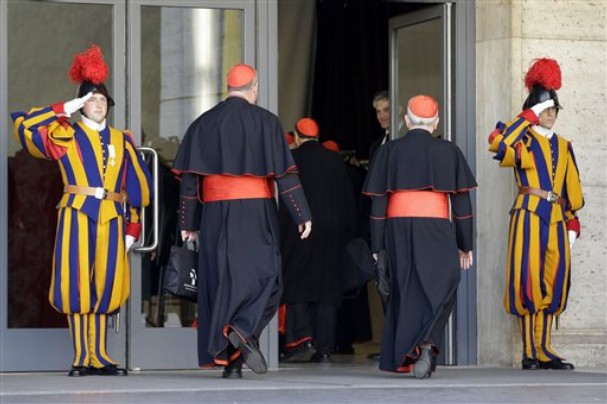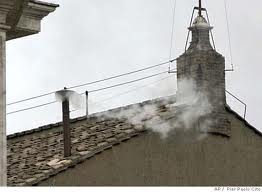
Since Pope Benedict XVI announced his impending abdication, there has been an alluvia of interest in who will succeed the German Shepherd as the Vicar of Christ. Speculation in the secular media has centered on superficialities, like whether the Italians will “take back” the Chair of St. Peter. Other reports evaluated the angle of European cardinals voting en bloc to keep the papacy in the Old World. Many media types were energized by the prospect of a Pope who did not emanate from Europe...
 At this point, anyone who claims that they know who will be elected the next Supreme Pontiff is blowing sfumata out of what is decidedly not the Sistine Chapel smokestack. While current Canon Law does not prohibit placing wages with Paddy Power on the next pope, it would be foolish to do so, especially before the College of Cardinals sets the date and the Holy Spirit works with the electors.
At this point, anyone who claims that they know who will be elected the next Supreme Pontiff is blowing sfumata out of what is decidedly not the Sistine Chapel smokestack. While current Canon Law does not prohibit placing wages with Paddy Power on the next pope, it would be foolish to do so, especially before the College of Cardinals sets the date and the Holy Spirit works with the electors.In the coming days, it may be interesting to evaluate some of the papabili to appreciate who will lead the world’s 1.2 billion professed Catholics. To do so seriously, one ought to abandon the siren calls of nationality or skin tone and discern deeper.
A good way to achieve this objective is to think in time. By considering the past papal conclaves since 1900, one can appreciate trends, how external circumstances influence Conclaves as well as the attributes of the prior Pope.
The numbers of Cardinals participating have grown from around 60 to around being capped at 120. This Conclave will have 115 electors. It used to be that the vast majority of Cardinals were European (and about half hailing from Italy. This the Papacy was seen as the Italian Job (sic) in secular European politics. After the 1938 Conclave, more Cardinals were appointed from throughout the world, to recognize the global impact of the Catholic Church. Today, just over half of the Cardinals are from Europe, and only 22% are from Italy. The United States has eight Cardinal electors, and Canada has three. There are 22 Cardinals who have been appointed in the last year. Although thinking in time may not vet specific candidates for the Conclave 2013, it does highlight how a variety of factors like the papabili’s age, the predecessor’s profile and contributions, the theology, the Zeitgeist and the evolving roles of the papacy impact the election...
There have been nine Conclaves since 1900. With the exception of 1978, the year of three Popes, a large majority of the electors have been appointed by the immediate predecessor. Popes are more likely to appoint Cardinals who agree with their theological weltanschauung. Hence, it is folly to think that there will be a radical break in theology in the succeeding Supreme Pontiff...
Be that as it may, there is a change in character with the change in Vicars of Christ. Some of this in inevitable as everyone brings their own experiences and tendencies to the Chair of St. Peter. But the College of Cardinals can consciously choose a leader with a different tenor...
SEE MORE at DCBarroco.com

No comments:
Post a Comment